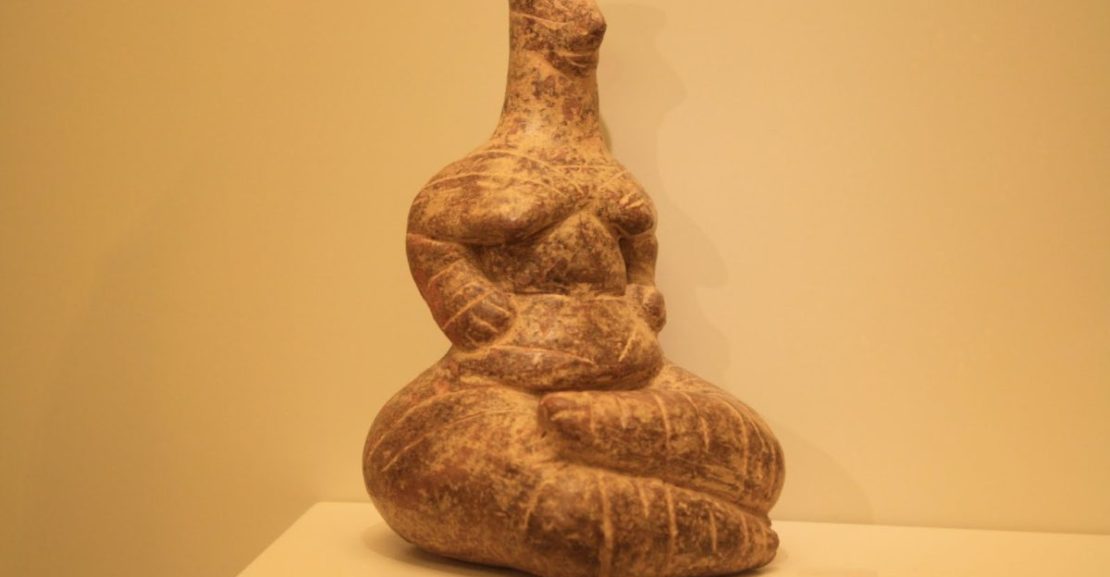Neolithic humans first settled Crete around 8.000 years ago. With them they brought their insatiable domesticated animals: pigs, goats, sheep, possibly dogs and cats and, of course, mice. Yet they also brought the first crops, mainly cereals.
Caves were perhaps the first dwellings. The oldest true settlement on Crete has been discovered at Knossos, at the same site where ‘Minoan’ civilization flourished a millennia later. The settlement is Neolithic,and has been dated to roughly coincide with the first confirmed arrivals on the island. Traces of earlier human presence are rare. Why so? What can this paucity if finds mean? In essence, everything and nothing. There may be other traces, but they have yet to be discovered. Pre-Neolithic humans may simply have gone to the island on hunting expedition, without settling permanently. Then again, they may have been in the habit of camping close by the shores, so that any traces of their presence were obliterated by the rise in sea level after the last ice age.
Is there any likelihood that Pre-Neolithic man never set foot on the island? That would be paradoxical if nothing else. Seafaring with primitive means was widespread in all the islands of the Aegean and the Mediterranean a few millennia before the first Neolithic settlement at Knossos. There would have been no reason for Pre-Neolithic hunters not to risk a least short-lived incursions into Crete.
Question remains nonetheless, and pre-Neolithic Crete lies veiled in mystery to this day. What we can be sure of is that the process that begun with the arrival of the first Neolithic farmers gradually transformed the Cretan landscape.

